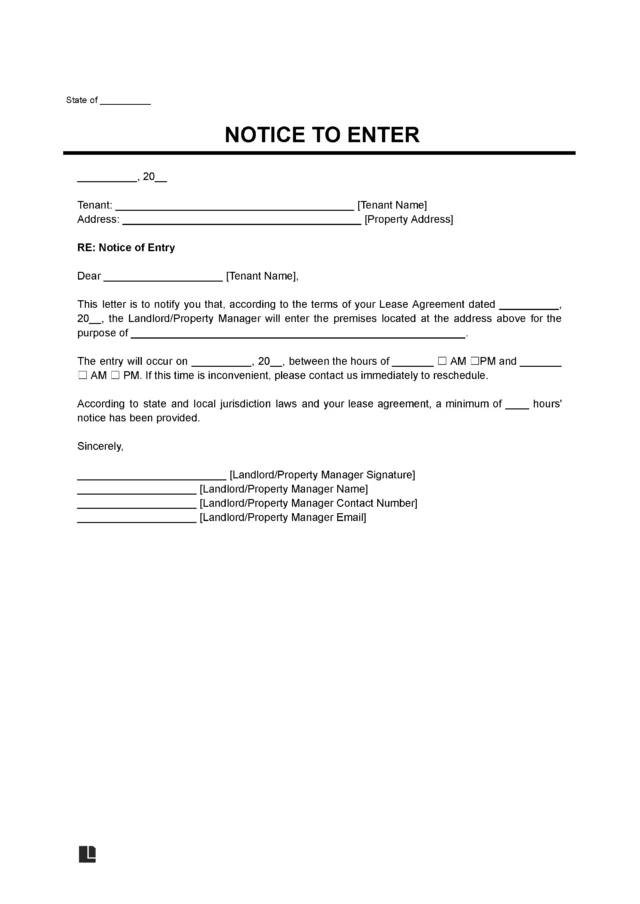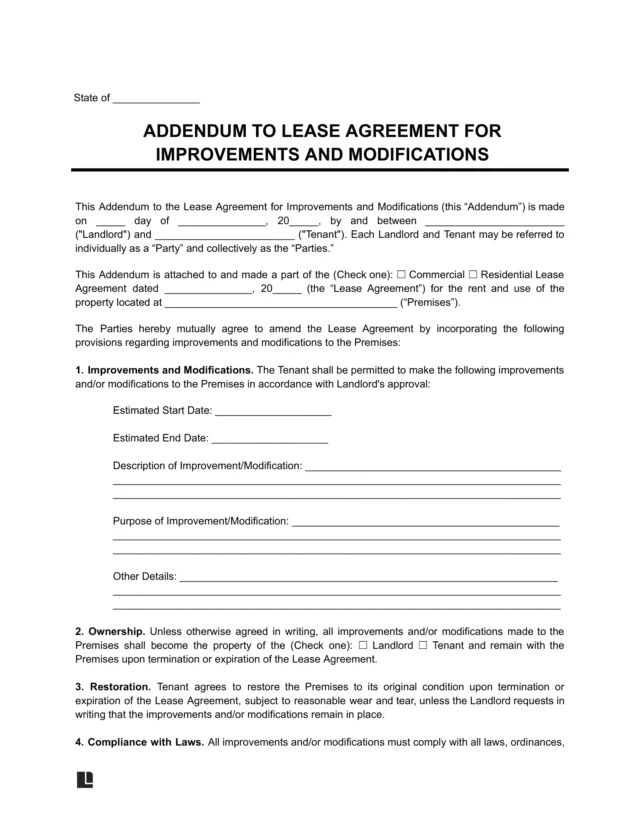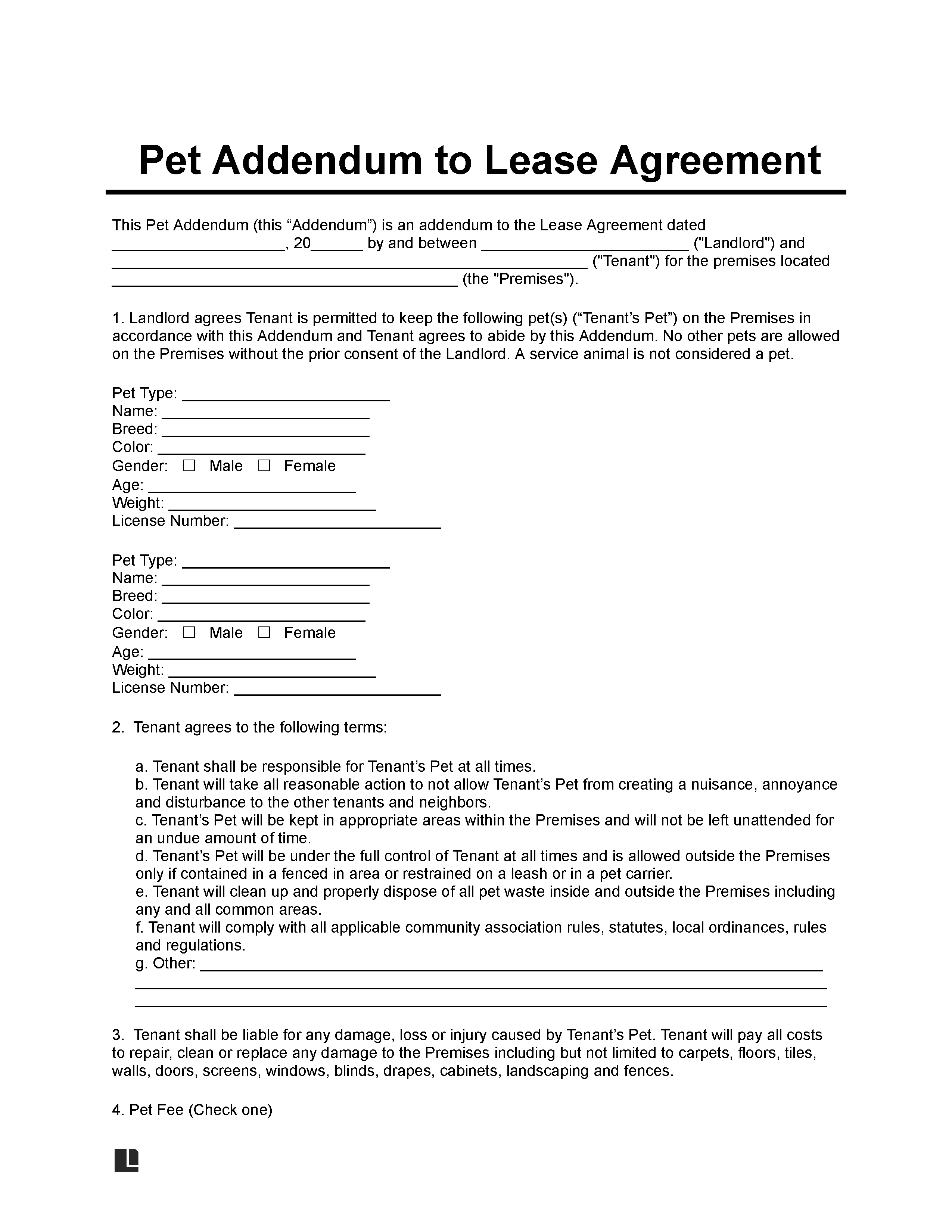What Is a Pet Addendum to a Lease Agreement?
A pet addendum to a lease agreement is a legal document that expands on an existing rental agreement to allow a tenant to keep a pet within the property. Once the landlord approves and both parties sign the document, it becomes a part of the lease and carries the same legal weight.
Landlords typically use a pet addendum to address whether pets are allowed within the rental. A pet addendum is especially useful in cases where the original lease does not mention pets. Similarly, if a tenant gets a new pet after the lease has been signed, both parties can sign an addendum to update the agreement without having to write a new lease.
You may need a pet addendum in the following situations:
- When the lease is silent on whether pets are allowed, or if you are amending a prior pet clause in the lease
- If a tenant decides to get a pet during the lease term
- You need to set clear rules for pet fees and deposits, and who will be responsible for any damage caused by the pet
If the main lease has a detailed pet clause, an addendum may not be required. So, if your original lease already covers pets, you can skip the addendum. However, many landlords still use one to ensure the tenants clearly understand the rules and responsibilities. It also offers other practical benefits such as:
- Preventing misunderstandings between landlords and tenants
- Protecting the property from damage
- Providing legal backing to landlords if rules are broken
- Making rental properties more attractive to responsible pet owners
Key Components of a Pet Addendum
A pet addendum usually includes the following information so both the landlord and tenant know precisely what is expected of them:
Parties: The names of both the landlord and the tenant
Original lease details: The date the lease began, the rental property address, and any other identifying information
Pet details: Important information about the pet, such as its name, type (dog, cat, etc.), breed, weight, age, gender, and license or registration number (if required). A list of any pet breeds or types of pets that are prohibited, such as exotic animals or wildlife
Pet fees: A section to identify whether the landlord charges a one-time, non-refundable fee to allow a pet or not
Pet Deposits: A section stating whether the tenant must pay a refundable or a non-refundable pet deposit in addition to the security deposit to cover potential damage caused by the pet
Pet rent: If the tenants will pay an additional weekly, monthly, or yearly rent because of the pet
Liability statement: A clear statement that mentions that the tenant is responsible for any damages or injuries that the pet may cause
Hold harmless clause: A clause within the pet addendum that protects the landlord if the pet causes harm or injury to another person or property
Compliance statement: A rule stating that the landlord may ask the tenant to remove the pet from the premises if the tenant breaks the addendum’s terms
Signature: Signatures of both parties for the addendum to be valid
IMPORTANT: Protected Animals
Under the Fair Housing Act (42 U.S.C. § 3604(f)) and the Americans with Disabilities Act (ADA), landlords cannot charge pet fees, deposits, or extra rent for service animals or emotional support animals. These animals are protected by law and must be allowed as a reasonable accommodation.
Common Provisions in a Pet Addendum
A pet addendum usually includes rules that protect the property and set clear expectations for the tenant.
Tenant Responsibilities
- The pet must not disturb the neighbors or damage the property.
- Tenants will be responsible for supervising the pet at all times and keeping it on a leash, in a carrier, or in a fenced area whenever outside.
- Tenants must clean up after their pets and dispose of waste properly, both inside and outside the property.
- Tenants must keep their pets well-groomed and make sure their pets are up to date on any necessary vaccinations.
- Tenants must follow local laws, community rules, and property guidelines related to pets.
Landlord Rights
- The landlord may inspect the premises to ensure the tenant follows all pet rules.
- If the pet causes problems, the landlord has the right to revoke the tenant’s permission to keep the pet on the property. However, note that landlords cannot refuse or restrict service animals or emotional support animals under the Fair Housing Act (42 U.S.C. § 3604(f)) and the Americans with Disabilities Act (ADA).
Lease Violations
- Bringing a pet without prior approval from the landlord or breaking the rules laid out in the pet addendum of the lease is considered a lease violation.
- In most states, landlords can issue a notice requiring the tenant to fix the problem caused by the pet or risk lease termination.
- If the tenant refuses to comply, the landlord may begin the eviction process under general landlord-tenant law.
Sample Pet Addendum Template
View the sample pet addendum to a lease agreement below to see how to properly complete each section. Then, download and customize your own free pet addendum template in PDF or Word.








